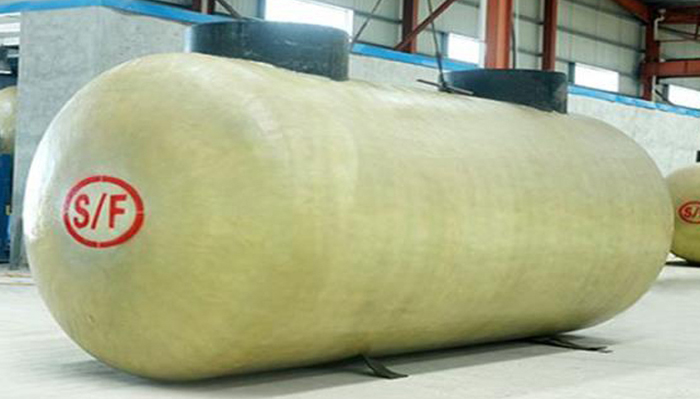Product Category
Double-layer oil tank electric welding leak repair method
Date: Aug 13, 2020

Safety preparatory work before hot fire After the grease in the double-layer oil tank is cleaned, the hot fire conditions are initially available, and the following safety measures need to be taken before construction:
1. Before construction, construction requires a mechanical inspection work ticket, hot work permit, tank entry permit, hot fire report, and the approval of relevant departments before construction
2. Provide safety education on fire prevention, explosion prevention, and anti-virus for the maintenance personnel entering the tank, and explain the safety precautions.
3. Before the fire starts, the explosion tester shall be used for detection, and the electric furnace explosion test shall be carried out on the oil tank.
4. Check whether the grounding wire is correct before entering the tank.
Construction plan and safety precautions
1. The construction site has complete fire protection and fire protection measures, and firefighters and medical personnel are on standby for monitoring.
2. The distance between the oxygen cylinder and the acetylene cylinder, the welding point and the grounding point shall be used strictly in accordance with the specified distance.
3. The construction unit shall be responsible for compiling the materials, machinery and other construction tools in the construction plan, and the technical department and safety department shall be responsible for the construction after review and approval.
4. The safe passage into the tank should be carefully inspected to remove obstacles, kept unobstructed, and the person responsible for it.
5. After the solder joints are finished, let a professional inspect it to ensure that there will be no problems later.  Before dismantling the double-layer oil tank, check the surrounding area of the pressure vessel and remove the weeds and flammable materials around the oil tank. Whether the surrounding site is suitable for the construction conditions, whether it can meet the operation of the crane, whether the pressure vessel equipment safety inspection is qualified, whether the fire protection equipment is complete, and whether the medical staff is in place.
Before dismantling the double-layer oil tank, check the surrounding area of the pressure vessel and remove the weeds and flammable materials around the oil tank. Whether the surrounding site is suitable for the construction conditions, whether it can meet the operation of the crane, whether the pressure vessel equipment safety inspection is qualified, whether the fire protection equipment is complete, and whether the medical staff is in place.
1. Make preparations. We must pay attention to whether fire prevention equipment is prepared in the workplace, mainly to prevent sparks when the pressure vessel is removed, and combustion with the remaining objects in the oil tank, and then pay attention to whether the equipment site is level and whether there are people present to supervise it. Ensure the safety of the construction site.
2. Firstly, cut off the connection between the removed oil tank and the adjacent oil tank and the oil inlet and outlet pipelines to separate the removed oil tank from other oil tanks, and then turn off the power supply of all peripheral facilities.
3. it is the cleaning before the removal of the oil tank. The equipment needed is: explosion-proof fan, foam and ignition point detector. The explosion-proof fan is to ventilate the oil tank, remove the explosive gas, and ensure the safety of removal. Then use foam to clean the residue in the oil tank, remove the valve in this case when cleaning, and then open the hole cover for disassembly. In the process of disassembly, it is best to use a flash point detector to detect the concentration of oil and gas to see if the concentration in the tank reaches the concentration that can be constructed to ensure the safety of dismantling.
4.start the disassembly work, install a reinforcement ring on the bottom circle of the tank wall to be dismantled, weld the lifting lugs, configure the tank boom, and then hang the chain hoist. After that, the tank wall and the tank bottom plate are removed and cut to separate the tank wall and the tank bottom plate as a whole. In the process, the first circle of tank wall should be cut off first, and the chain hoist should be put down at the same time, and a circle of can wall should be cut, in turn, until all the can walls are cut. The last step is to cut the top rail and accessories of the tank, and cut the bottom plate in the order of welding.
5. Hoisting machinery must be operated by specially trained operators. Other personnel are strictly prohibited from using it. All kinds of hoisting machinery must work within the allowable load range and must not exceed the load standard. During the entire hoisting process, construction personnel must obey the command, be familiar with the command signal, and must not leave the work post without authorization. The construction warning area divided during hoisting should be set up with restricted zone signs, and non-construction personnel are prohibited from entering.
1. Before construction, construction requires a mechanical inspection work ticket, hot work permit, tank entry permit, hot fire report, and the approval of relevant departments before construction
2. Provide safety education on fire prevention, explosion prevention, and anti-virus for the maintenance personnel entering the tank, and explain the safety precautions.
3. Before the fire starts, the explosion tester shall be used for detection, and the electric furnace explosion test shall be carried out on the oil tank.
4. Check whether the grounding wire is correct before entering the tank.
Construction plan and safety precautions
1. The construction site has complete fire protection and fire protection measures, and firefighters and medical personnel are on standby for monitoring.
2. The distance between the oxygen cylinder and the acetylene cylinder, the welding point and the grounding point shall be used strictly in accordance with the specified distance.
3. The construction unit shall be responsible for compiling the materials, machinery and other construction tools in the construction plan, and the technical department and safety department shall be responsible for the construction after review and approval.
4. The safe passage into the tank should be carefully inspected to remove obstacles, kept unobstructed, and the person responsible for it.
5. After the solder joints are finished, let a professional inspect it to ensure that there will be no problems later.

1. Make preparations. We must pay attention to whether fire prevention equipment is prepared in the workplace, mainly to prevent sparks when the pressure vessel is removed, and combustion with the remaining objects in the oil tank, and then pay attention to whether the equipment site is level and whether there are people present to supervise it. Ensure the safety of the construction site.
2. Firstly, cut off the connection between the removed oil tank and the adjacent oil tank and the oil inlet and outlet pipelines to separate the removed oil tank from other oil tanks, and then turn off the power supply of all peripheral facilities.
3. it is the cleaning before the removal of the oil tank. The equipment needed is: explosion-proof fan, foam and ignition point detector. The explosion-proof fan is to ventilate the oil tank, remove the explosive gas, and ensure the safety of removal. Then use foam to clean the residue in the oil tank, remove the valve in this case when cleaning, and then open the hole cover for disassembly. In the process of disassembly, it is best to use a flash point detector to detect the concentration of oil and gas to see if the concentration in the tank reaches the concentration that can be constructed to ensure the safety of dismantling.
4.start the disassembly work, install a reinforcement ring on the bottom circle of the tank wall to be dismantled, weld the lifting lugs, configure the tank boom, and then hang the chain hoist. After that, the tank wall and the tank bottom plate are removed and cut to separate the tank wall and the tank bottom plate as a whole. In the process, the first circle of tank wall should be cut off first, and the chain hoist should be put down at the same time, and a circle of can wall should be cut, in turn, until all the can walls are cut. The last step is to cut the top rail and accessories of the tank, and cut the bottom plate in the order of welding.
5. Hoisting machinery must be operated by specially trained operators. Other personnel are strictly prohibited from using it. All kinds of hoisting machinery must work within the allowable load range and must not exceed the load standard. During the entire hoisting process, construction personnel must obey the command, be familiar with the command signal, and must not leave the work post without authorization. The construction warning area divided during hoisting should be set up with restricted zone signs, and non-construction personnel are prohibited from entering.
Last article:
Send Your Inquiry
We not only provide a good product, but also provide high quality service. If you are interested in our products,
you can contact us in the following ways.
you can contact us in the following ways.















































































































